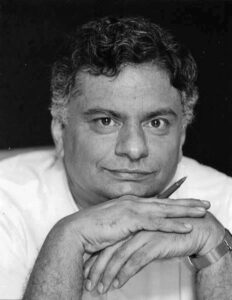Determining the price of a currency
Had the world been ruled by women, would the exchange rate have become a symbol of muscular national strength? That is, if women had been in charge, would countries have equated a ‘strong’ currency with national power?
This is not a frivolous question. Throughout the 20th century, and even now when we are well into the 21st many people, especially politicians, think a ‘strong’ currency signifies how well the country is doing. This shows a complete lack of understanding of a very simple fact that the rate of exchange is no more, or no less than the price of a country’s currency expressed in terms of another country’s currency.
That’s all there is to it. There is no other significance of the exchange rate, especially, political. If there was, a country may as well take pride in the high price of carrots, beans and tomatoes.

That said, it is legitimate to ask: how is the price of a currency determined? The answer is very simple: it is determined exactly like the price of anything else: by the forces of demand and supply.
The exchange rate is thus a measure of the demand for a country’s currency: the higher the demand for, say, the rupee, the higher its price will be in terms of the dollar or the euro.
The opposite is also true. If no one wants to buy the rupee, as was the case in 1966 and 1991, its price will be lower — for every dollar you buy, you will have to pay more rupees. Or, in reverse, for every dollar that the foreigner brings to India, she will get more rupees.
This was not always the case. Until 1971, the world had fixed — instead of floating — exchange rates. Governments fixed the rates at whatever rate they thought was appropriate. Thus there was a time when a dollar was worth just Rs 5. But this did not mean that the rupee was ‘strong’ or that there was great global demand for it.
In 1971, all this changed and the world moved to floating exchange rates. That is why today a dollar is worth around Rs 65. But less than a decade ago it was worth Rs 40. Some months before that it had been worth Rs 45. Last year the rupee had slipped to almost Rs 69 to the dollar.
In other words, the price of the rupee in terms of dollars had become volatile. And the volatility depended on the demand for it. So the real question to ask is what determines the demand for a currency. And the answer is many factors.
The strength of the real economy is one factor. Compared to other countries, the Indian economy is very strong now, so foreigners want to invest here. This has boosted the demand for the rupee.
The absence of alternatives to invest is another reason. Today, India offers the highest returns to investors in the stock markets, so they are flocking here. If things start going badly, as they did during 2012–14, they could just as easily go away and the rupee would start becoming ‘weaker’.
The demand for rupees and the supply of dollars also depend on how much an economy is integrated with the world economy. Until 15 years ago, India was not very integrated and only about 15 per cent of its production was global in nature. Today that number has increased to almost 50 per cent which means what happens in other parts of the world affects the Indian economy deeply, and therefore, the exchange rate as well. In other words, the unpredictability has increased manifold.
Thus we have gone from a world of complete exchange rate certainty before 1971 to one of complete uncertainty now. Those who want to buy dollars can never be sure how much they will pay for a dollar. And those who want to sell dollars can never be sure how much they will get from the sale. This has created a huge problem for the management of countries as well as companies.
The only groups that have benefitted from this change are the gamblers who speculate on the foreign exchange market. They do so on a daily basis and make the problem worse.

